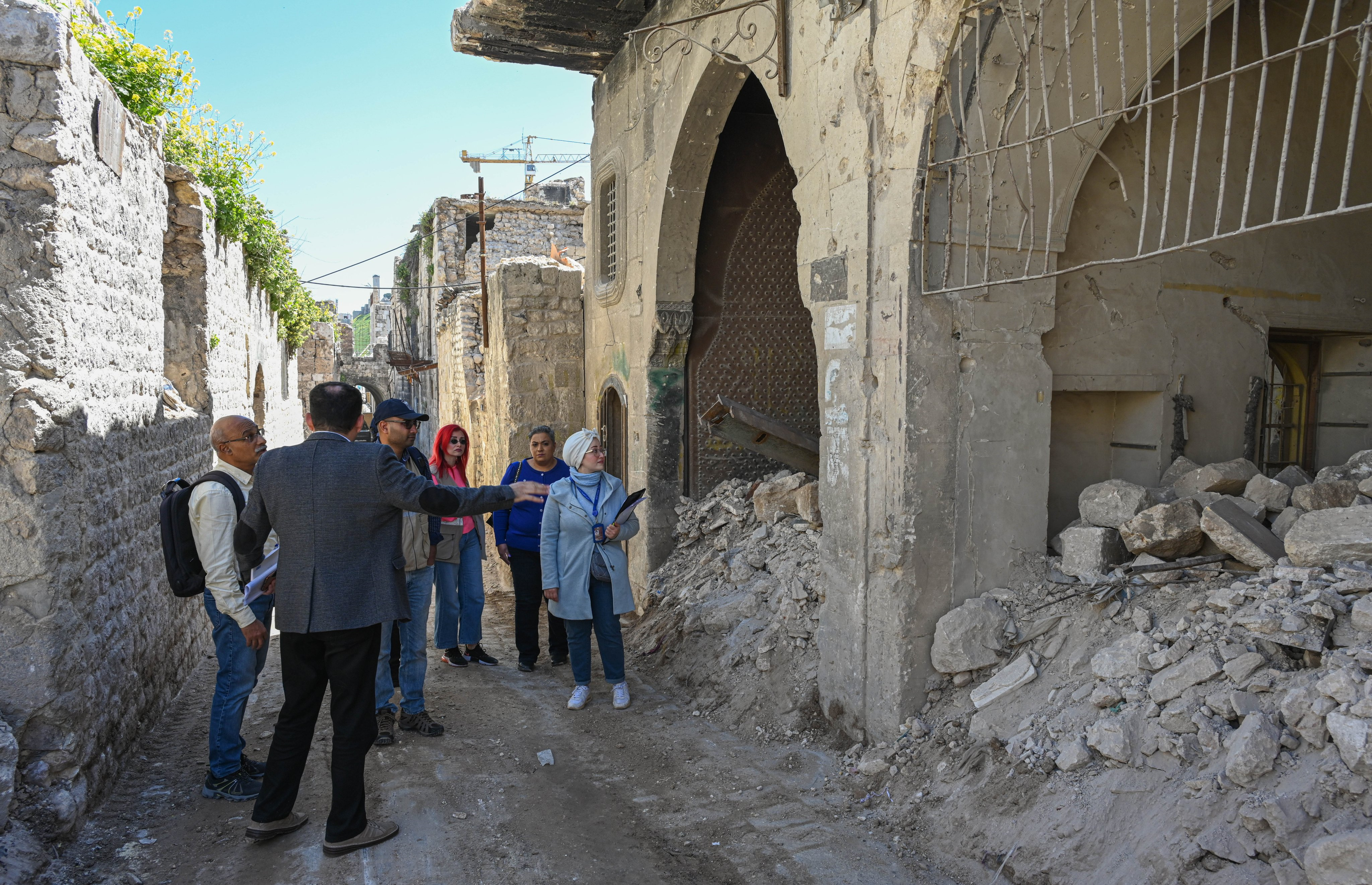The Crisis Academy turns one: Tackling crisis through action learning
November 22, 2023

In response to feedback that traditional training is not enough, the Crisis Academy evolved into a three-track action learning circuit.
Building #CrisisReadiness in a world of polycrisis. The knowledge, skills and networks required to navigate and influence crises are ever-changing. Equipping our people with crisis-ready skills calls for adapting to how people learn, and act amid emerging risks. Learning, led by instructors and curriculums, is not enough. Conversely, ecosystems of practitioners, that connect through learning opportunities they create together, are nurtured in community spaces and lean on each other while taking action on the frontlines of crises, is the need of the hour. This realization inspired UNDP’s Crisis Academy.
As we celebrate one year since the Crisis Academy’s (CA) launch launch, we reflect on why it came into being, how it evolved, how it is contributing and what it should do to ensure our greatest asset, our people, remain #CrisisReady.
Every challenge is an opportunity. The pandemic pushed UNDP's longest-running flagship SURGE Induction trainings for crisis professionals online in 2020. We also received feedback that 'training courses are not enough' to guide crisis action. And so, the Crisis Bureau widened its online experiment beyond learning, into a three-track action learning circuit; a learning track (to share knowledge), a community track (to continuously generate and exchange knowledge) and an action track (to apply knowledge and develop real-time solutions).
Scaling up a successful experiment is possible. The uptake on SURGE Academy’s three-track action-learning experiment, co-created with and for practitioners, was immense. Its benefits were seen in not only helping to operationalize existing knowledge, but also shaping future policy tools by bringing together thematic experts and field personnel, many logging-in from the frontlines of active crises. Its success, and requests for replicating this model, led to additional academies being co-created (Nexus, Stabilization, Infrastructure, SURGE Data Hub and Prevention) with experts from UNDP thematic teams and 75+ external partners (UN agencies, bi-laterals, multi-laterals, international financial institutions, NGOs, academic institutions).
By the time it launched in November 2022, the Crisis Academy had six functioning thematic academies. “This is #FutureSmartUNDP at work,” UNDP Administrator Achim Steiner said as he cut the virtual ribbon with more than 5,700 crisis readiness enthusiasts from UNDP and partners, from around 179 countries.

By the time it launched in November 2022, the Crisis Academy had six functioning thematic academies. “This is #FutureSmartUNDP at work,” UNDP Administrator Achim Steiner said at the launch.
Co-created action learning works. These academies were co-created by 2,500+ crisis practitioners, subject matter experts, deployments experts and talents ranging from young to senior personnel, including learning, communications and coordination professionals. More than 500 of them learn and contribute across multiple academies. Each of the six academies nurtures them through on-demand learning, people-to-people connections, knowledge exchanges and opportunities for action, including planned and organic exchanges within and across academy ecosystems.
The academies’ ‘way of working’ is often lauded, featuring:
- Co-creating with a coalition of the willing, including practitioners and partners who actively prioritize, develop and reshape academy investments. By 31 October 2023, 248 courses were delivered across the six campuses, training over 2,800 crisis professionals from over 115 country and regional UNDP offices and partner organizations.
- Connecting three traditionally distinct areas of learning, community, and strategic action investments, into one action-learning journey. For example, since 2020, the SURGE Academy trained more than 300 personnel and helped to deploy more than 240 practitioners to crisis frontlines, including Afghanistan, Mozambique, Ukraine, Syria and Libya. Talking about her SURGE mission to Moldova after the war in Ukraine, UNDP Azerbaijan’s Nargiz Guliyeva, said: "It has allowed me to… respond to the complexities of crisis and work under pressure in a multicultural environment.”
- Human-centred learning to develop engaging, multi-lingual, dynamic learning products and community spaces, focused on strategic priorities and pragmatic, human-centered actions, over simply downloading information. CA’s self-paced essential courses (Nexus, Social Media Analysis, Housing Building and Damage Assessment, Stabilization, and Infrastructure) were completed by more than 1,500 practitioners globally. Its average rating is 9 out of 10, along with CA’s gamified live trainings.
- Encouraging action is key, throughout CA targeting, design, positioning, partnering, delivering, and reviewing. Practitioners begin engagements by sharing what they are doing and close with a list of actions they’d take as individuals and collectively. This creates an ‘inspiration board’ of opportunities to support communities in even the most challenging environments, with minimal security.
- Creating #champions focused not on challenges, but on their sphere of influence to address them, by innovating, taking calculated risks and finding potential for action in their day-to-day work and through crisis deployment.
"It is not often that a training opens its doors to donors and that we can have honest conversations to increase impact. This makes our Stabilization efforts unique."Heike Thiele, Director for Crisis Prevention and Stabilization of the Federal Foreign Office of Germany
The academy movement continues. The organic experiment, which evolved into the Crisis Academy, emerged from the clear sentiment that “training is not enough.” This view clearly persists, as requests for additional academies pour in. As the academy movement spreads, we will transition the CA from a start-up to a sustainable-enterprise and share how its three-track model works with those interested in building their own, giving as many people as possible the knowledge and tools to stay ahead of the next crisis, and safeguard sustainable development, against all odds.
The Crisis Academy’s 3-track model of co-created learning, community and action is designed to build crisis-ready talent, motivated to deliver innovative and development-oriented solutions to complex, high-risk crisis contexts through anticipation, response, recovery and preparedness actions. For more, see the Crisis Academy Video + Webpage + Twitter + Medium Stories.

 Locations
Locations